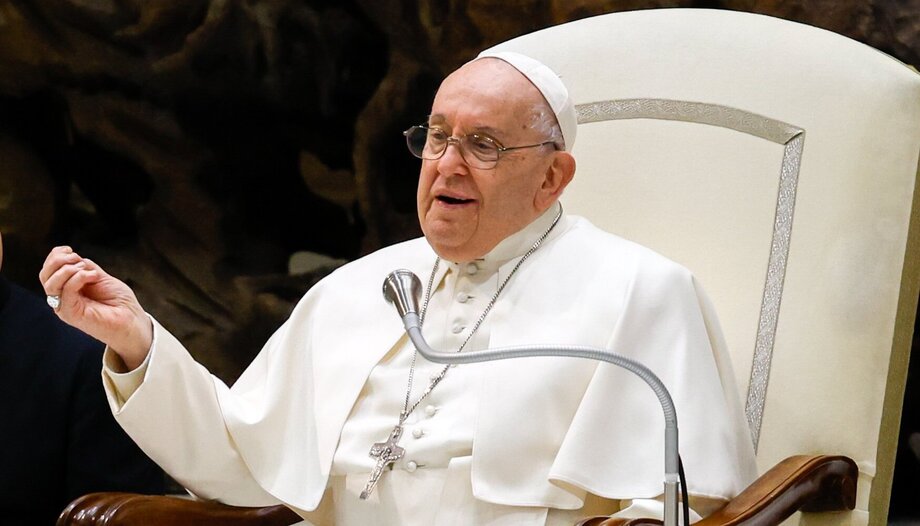"It is 800 years since the living nativity scene that St. Francis of Assisi created in the Italian town of Greccio. His intention was to represent the scene of the birth of Jesus, thus reliving through the senses the evangelical simplicity, poverty and humility of the Holy Family in the grotto of Bethlehem. And this is where the living nativity scenes were born," began the Audience Pope Francis in the Paul VI Hall.
During these days close to the Christmas holidays, he continued his meditation, "we can run the risk of neglecting what is essential, attracted by the numerous offers of consumerism and worldly well-being. In this context, the characters of Bethlehem show us how to truly celebrate Christmas, with sobriety and evangelical joy".
The Nativity Scene and the real Christmas
"Let us contemplate the manger, in the familyIt helps us to focus on what is most important in our lives, our relationship with God, with others, and with creation.
Let us cultivate in our environments a climate of harmony, joy and peace", encouraged the Holy Father on the eve of Christmas, in which he focused his meditation on the theme: "The Holy Father's message is: "Let us be in harmony, joy and peace".The crib of Greccioa school of sobriety and joy" (Lk 2:10-12).
Francis, the Pontiff pointed out, referring to the saint of Assisi, does not want to create a precious work of art, but to arouse, through the manger, "amazement at the extreme humility of the Lord, at the privations he suffered, out of love for us, in the poor grotto of Bethlehem. In fact, the biographer of the Saint of Assisi notes: "In this moving scene, evangelical simplicity shines forth, poverty is praised, humility is recommended. Greccio has become, as it were, a new Belen".
Here is the first characteristic, the Pope stressed again. "Christmas has become for so many only an occasion for giving gifts to one another. The Lord himself warned us against this, saying that the most insidious temptation to faith is the 'dissipation of the heart' (cf. Lk 21:34), the hustle and bustle of worldly well-being that anesthetizes the soul."
Bringing us back to what is important
And the Nativity Scene is born to "lead us back to what is really important", the Pope added, "to God, who comes to dwell among us, but also to other essential relationships, such as the family, present in Jesus, Joseph and Mary, and the loved ones, represented by the shepherds".
At this point, Francis wanted to emphasize: "People before things, people as they are: we note that the characters in the crib are simple, poor; and they are in harmony with creation: in the crib, the landscape occupies the greatest space and there is never a lack of ox and donkey! It is good, then, to stand in front of the crib to reorder life by returning to the essentials. It is like entering an oasis to get away from the daily hustle and bustle, to find peace in prayer and silence, in an uncontaminated tenderness".
"I am thinking of children and young people, who run the risk of an indigestion of virtual and violent images: in the crib they can rediscover genuineness and creativity. How beautiful it is that they stay there together with their grandparents, doing good to each other," he exclaimed in his words.
The Nativity Scene, a domestic Gospel
But the Greccio nativity scene not only speaks of sobriety, but also of joy. But where does this extraordinary Christmas joy come from, he asked. "Certainly not from having brought gifts home or from having lived sumptuous celebrations. No, it was the joy that overflows from the heart when one touches with one's own hand the closeness of Jesus, the tenderness of God, who does not leave alone, but consoles".
This is the experience of the manger, he pointed out. "To perceive the closeness of God in a concrete way. It represents reality as it is: there is daily life, with shepherds and other trades; there is evil, represented by Herod's castle; there is, finally, the beauty and misery of the world. But everything is inhabited by the Newness: God is in our midst and embraces our existence".
To sum up his message, the Pope said that "the crib is like a small well from which to draw the closeness of God, a source of hope and joy. It is like a living Gospel, a domestic Gospel. Like the well in the Bible, it is the place of encounter, where we bring Jesus, as did the shepherds of Belen and the people of Greccio, the expectations and worries of life. If, before the manger, we entrust to Jesus all that is dear to us, we too will experience "great joy", to quote St. Matthew in chapter 2.
China, peoples at war
In concluding, the Pope addressed his thoughts to the victims and the injured caused "by the devastating earthquake that struck the Chinese province of Gansu last Monday. I am close with affection and prayer to the people who are suffering".
He also asked not to forget "the people who suffer from the evil of the the warWars are always a defeat, let us not forget, only the arms manufacturers win. The Holy Father asked to focus attention "on Palestine, on Israel, on the tormented Ukraine, which suffers so much. Mr. Ambassador is present here. Let us think of the children at war. Let us go to the manger and ask Jesus for peace. He is the Prince of Peace".
As usual, he greeted in a special way the elderly, the sick, the newlyweds and the young, before praying the Our Father and giving the Blessing.









